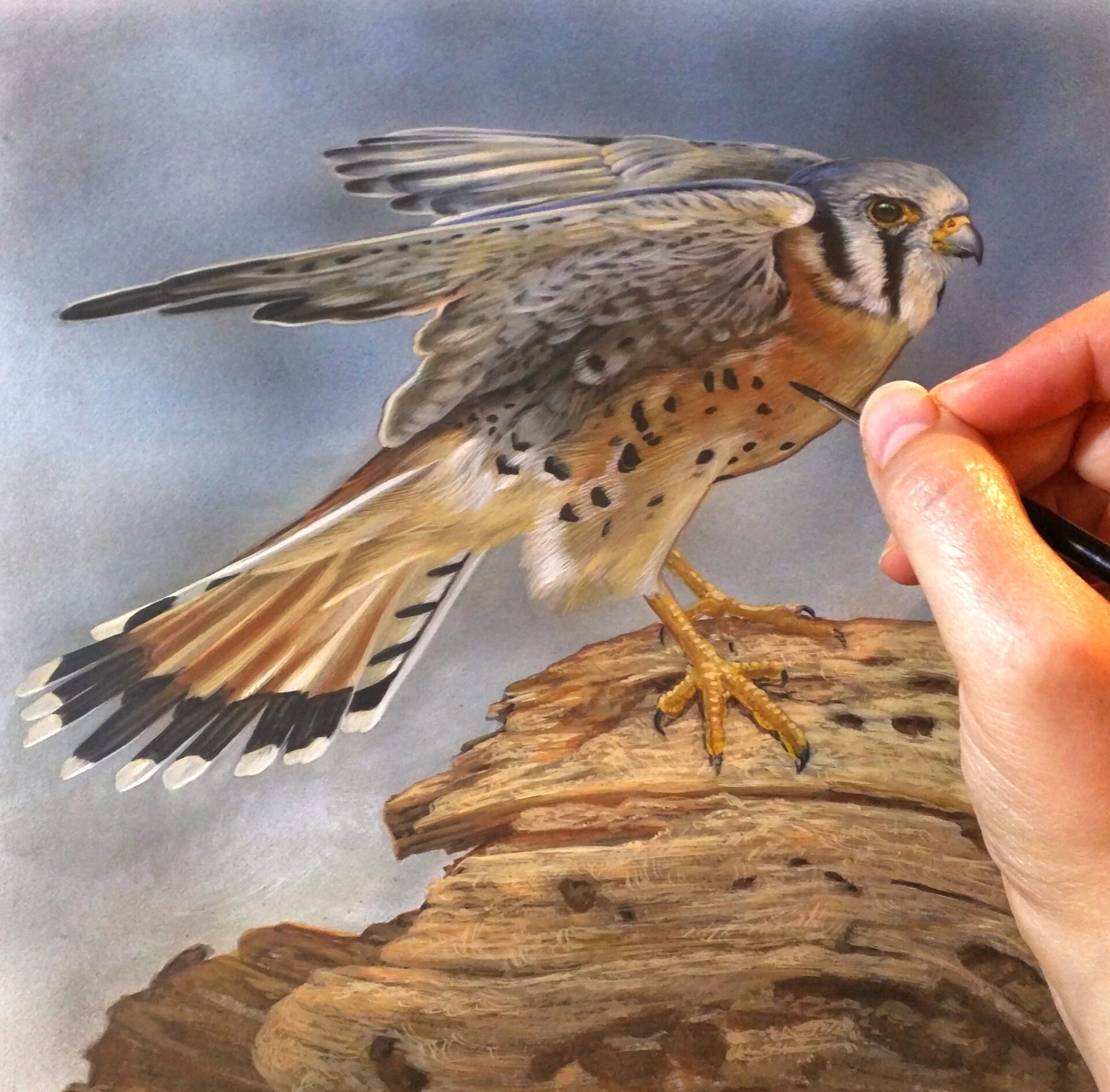As a wildlife artist, I’m often asked about how I developed my distinctive style. The truth is, finding your artistic voice is an ongoing journey – one that I’m still very much on today. Let me share some key insights from my path, hoping they might resonate with fellow artists.
My love for wildlife and nature started early. Growing up surrounded by the natural world, I was constantly sketching the animals and landscapes around me. But it wasn’t until I committed to pursuing art professionally that I began to truly explore what made my work unique.
One of the most important lessons I’ve learned is the balance between patience and productivity. Wildlife art requires keen observation, and I found that spending time watching animals in their natural habitats profoundly influenced my work. However, I also discovered the danger of becoming paralyzed by the pursuit of perfection. The solution? Paint, and paint often. I committed to creating hundreds of pieces, embracing the idea that repetition is a powerful teacher. This approach not only honed my skills but also allowed me to explore various aspects of my artistic voice more quickly.
Another crucial element in developing my style was my gravitation towards the miniature format. I found myself drawn to canvases of 8×10 inches and smaller. This choice allowed me to work through the artistic process more rapidly, accelerating my learning and stylistic evolution. That said, I’ve been careful not to limit myself. Tackling larger pieces has been instrumental in stretching my abilities as a painter and creating works with different kinds of impact.
Experimentation has been a constant companion on this journey. I’ve spent countless hours testing different techniques, materials, and approaches. Through this process, I developed methods that allow me to create the soft textures and fine details characteristic of my paintings. Yet, I’ve learned that experimentation isn’t a phase – it’s an ongoing part of being an artist.
Perhaps most importantly, I’ve learned to trust my instincts. There were times when I felt pressure to conform to certain trends or expectations in wildlife art. However, I found that my most successful and fulfilling work came when I stayed true to my vision, even if it meant taking risks.
To aspiring wildlife artists, I offer this advice: immerse yourself in nature, practice relentlessly, and don’t be afraid to experiment. Your unique experiences and perspective are what will set your work apart. Remember, finding your artistic voice isn’t about reaching a final destination – it’s about embracing the journey of continuous growth and discovery.
As I continue to evolve as an artist, I’m excited to keep pushing the boundaries of my craft. Each painting is an opportunity to refine my voice further, to connect more deeply with the natural world, and to share that connection with others through my art. The journey never really ends, and that’s what makes it so exciting.
Finding Your Artistic Voice: My Journey as a Wildlife Painter
